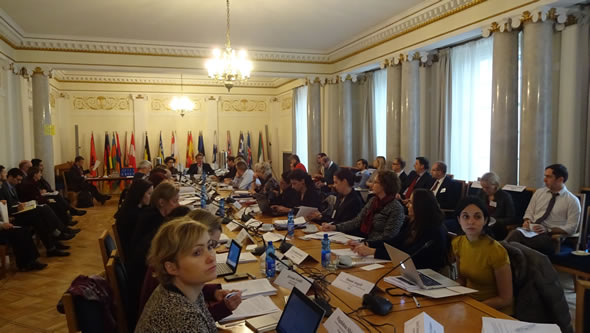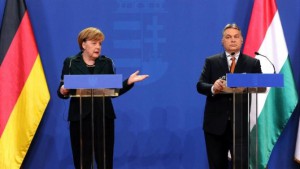Last week I explored a few Schengen borders in Central Europe, cycling around Lake Constance: the border between Austria and Germany near Bregenz and Lindau. The border between Germany and Switzerland near Konstanz (Constance). And the invisible borders criss-crossing Germany’s largest lake.
This is what these borders look like in August 2018:
Border crossing from Germany to Austria: that’s it.
This bit of water marks the border between Austria and Germany. Seen from Austrian side.
This is the border between Germany and Switzerland. The towns on both sides have grown together. The train-station of Constance is used by both countries.
I will write more here about the reality of Schengen borders in Europe in 2018 soon.
I also gave a long interview, while in Constance, to the leading regional daily Südkurier; discussing what the reality of Schengen means for proposals to unilaterally close national borders (between Germany and Austria, say, or all around Germany): it is simply not possible without a dramatic intervention disrupting daily lives of millions massively. This, and more – Salvini’s theatrics, rescues at sea, hysteria and migration, what real crises are today, surprising facts such as “more people received international protection last year in Belgium than in Italy” I discuss in the interview below (in German, so you have to use google translate).
Migrationsexperte: Die Flüchtlingskrise wird von Hysterie geprägt

Herr Knaus, Sie fahren zur Zeit mit dem Rad um den Bodensee. Verbinden Sie da Privates mit Beruflichem?
Es ist Urlaub in einer Region, in der einem viele Ideen kommen. Ansonsten arbeite ich im August im Bergdorf meines Großvaters im Bregenzerwald, am anderen Ende des Sees, schreibe Papiere und bereite eine Reise zum spanischen Außenminister vor. Hier am Bodensee schauen wir auch Grenzen an, bei Lindau etwa, und jetzt in Konstanz die Grenze zur Schweiz. Wir stellen uns dann vor, wie diese aussehen müsste, würde man hier versuchen irreguläre Migration nach Deutschland zu stoppen, so wie die CSU das im Juni vorgeschlagen hat.

Sie sind der Vordenker des EU-Abkommens mit der Türkei. Jetzt gibt es neue Flüchtlingsrouten übers Mittelmeer. Hat sich das Problem nur verlagert?
So wie der italienische Innenminister Matteo Salvini derzeit auftritt, würde man glauben, Italien wäre 2018 das Land, in dem die meisten Flüchtlingen in der EU ankommen. In Wirklichkeit hat Spanien dieses Jahr mehr Bootsflüchtlinge aufgenommen als Italien. Selbst in das kleinere Griechenland kommen aus der Türkei noch mehr Menschen. Für Asylantragsteller, die nach Deutschland kommen, sind immer noch die griechisch-türkische Grenze und der Balkan die wichtigsten Routen. Die öffentliche Diskussion nimmt das jedoch kaum wahr.
Woran liegt das?
Die Debatte wird von Hysterie beherrscht, und Populisten geht es nicht um Zahlen oder konkrete Lösungen. Selbst wenn irgendwann niemand mehr nach Italien oder Ungarn käme, um Asyl zu beantragen, würde Salvini Migration zum Hauptthema machen. In den ersten fünf Monaten dieses Jahres kamen im Durchschnitt weniger als 2700 Menschen im Monat über das Meer nach Italien. Dann wurde Matteo Salvini (Lega Nord) Anfang Juni Minister und versprach durch Sabotage privater Seenotretter eine angebliche Invasion zu stoppen. Das Ergebnis: Auch im Juni kamen wieder mehr als 3100 Menschen, dafür sind aber 564 Menschen ertrunken. Das sind mehr als fünf Mal so viele als im Durchschnitt im ganzen letzten Jahr im Monat ertrunken sind. Doch so wie Trump oder Orban ist auch Salvini gut darin, packende Geschichten zu erzählen, die mit der Wirklichkeit nichts zu tun haben. Und künstliche Krisen zu schaffen.
Eine künstliche Krise? Wir sehen wieder fast täglich Bilder vom Mittelmeer…
Es gibt genug echte Krisen, die man dringend lösen muss. Es sollte niemand mehr im Mittelmeer ertrinken. Es sollten sich viel weniger Menschen auf den Weg nach Libyen machen, um von dort in die EU zu kommen. Niemand, der mit einem Boot ankommt, sollte länger als sechs Wochen auf eine endgültige Asylentscheidung warten. An all diesen Krisen zu arbeiten und umsetzbare Lösungen vorzuschlagen, wäre verantwortungsvolle Politik. Aber zu behaupten, Italien müsste wegen 2700 Menschen im Monat die Flüchtlingskonvention, die Antifolterkonvention und die Europäische Menschenrechtskonvention aussetzen, weil Europa sonst von Migranten überflutet würde, hat mit seriöser Politik nichts zu tun.
Aber war diese Eskalation nicht vorhersehbar? Auch vor der jetzigen populistischen Regierung in Rom appellierte Italien immer wieder an die Solidarität der übrigen Mitgliedstaaten…
Blicken wir genauer hin. Asylanträge? In den ersten fünf Monaten dieses Jahres gab es in Deutschland 66 000, in Frankreich 46 000, in Italien nur 28 000. Positive Asylentscheidungen? Im Jahr 2017 bekamen in Deutschland 222 000 Menschen internationalen Schutz, in Italien waren es gerade 12 000. Weniger als in Belgien, viel weniger als in Frankreich. Italien ist durch seine Geografie betroffen, in den letzten Jahren sind über 600 000 Menschen dort angekommen, die Küstenwache hat sehr viele gerettet, danach sind aber viele weitergezogen. Und endgültige Asylentscheide dauern Jahre. So wurde die EU zum tödlichen Magnet. Die Vorgängerregierung in Rom hat dann auf die libysche Küstenwache gesetzt. Salvini hat applaudiert und gleichzeitig behauptet, dass das nicht genügt und der Rest der EU Italien weiterhin im Stich lassen würde. Und er macht das sehr geschickt.
Das Problem liegt doch vor allem in der Dublin-Verordnung…
Tatsächlich denken viele, in Italien wie in Deutschland, die Dublin-Verordnung hätte das Problem von Asylsuchenden auf Kosten der Mittelmeerstaaten gelöst: Hätte man Italien früher unter die Arme gegriffen, etwa mit einem System der Umverteilung von Asylsuchenden, dann wäre die Situation nicht so eskaliert. Doch hätte es vor 2014 ein System mit Quoten und Verteilung gegeben, wären Asylsuchende aus dem Rest Europas nach Italien zurückgebracht worden, so wenige Anträge gab es dort. In Wirklichkeit hat Dublin einfach nie funktioniert, Menschen sind immer weitergezogen und Länder haben sie selten zurückgenommen.
Trotzdem zetern Europas Populisten gegen die EU…
Dublin ist vor allem deshalb ein Problem, weil es eine Fiktion schafft, an der sich alle Populisten abarbeiten können, die aber noch nie umgesetzt wurde. Man muss klar vermitteln, wie eine humane Alternative zur Politik von Salvini tatsächlich aussehen könnte. Aus Brüssel kamen seit 2015 zwei große Ideen, beide waren weltfremd. Erstens: die Zwangsverteilung von Asylsuchenden. Das hat von 2015 bis 2017 nicht funktioniert und würde auch heute kaum ein Problem lösen. Das weiß die Europäische Kommission auch. Zweitens: mehr Geld für Frontex und EU Grenzbeamte. Doch weder in Spanien noch in Italien oder Griechenland fehlt es heute an nationalen Grenzbeamten. Wenn man dann noch dazu nimmt, dass Dublin nie funktionierte, wirkt die EU verloren. Und dann kommen Populisten wie Salvini und Viktor Orbán, behaupten es sei alles ganz einfach, das Versagen Europas nur eine Frage des Willens. Das ist Theater, aber leider mit guten Schauspielern.
Wie sieht eine europäische Lösung denn aus?
Wir müssen wissen, was im Regelfall passiert, wenn heute ein europäisches Schiff im Mittelmeer Menschen rettet. Es ist illegal, Menschen nach Libyen zurückzubringen. Kein anderes nordafrikanisches Land ist zur Aufnahme bereit. Daher brauchen wir gemeinsame europäische Aufnahmezentren, in denen schnell entschieden werden kann, wer Schutz braucht und wer nicht. Und das binnen Wochen, wie heute in den Niederlanden schon, wo die Fristen zwischen Ablehnung und Berufungsentscheidung verkürzt sind. Dazu braucht es Anreize für Herkunftsländer, dass ihre Bürger zurückgenommen werden, die keinen Schutz brauchen. Geschieht dies konsequent und schnell, ist das der beste Weg, viele davon abzuhalten, die gefährliche Reise anzutreten. Und niemand wird Folterern ausgeliefert oder in die Gefahr zurückgestoßen.
Angenommen, die Zentren funktionieren, wie Sie sagen. Wie geht es dann weiter?
Wer Asyl bekommt, dürfte in der EU bleiben. Es wäre im Interesse von Deutschland, Frankreich, der Niederlande anerkannte Flüchtlinge freiwillig aufzunehmen – als Teil eines Gesamtsystems, das irreguläre Migration reduziert und Schengen stärkt. Die meisten, die in den vergangenen Jahren in Italien ankamen, bekommen in der EU keinen internationalen Schutz. Ein EU-Fonds sollte dafür Gemeinden und Städte subventionieren, wenn sie anerkannte Flüchtlinge aus diesen Zentren aufnehmen.
Das Problem solcher Zentren ist oft, dass die Menschen nicht bleiben, um auf die Entscheidung zu warten. Wie würden Sie das lösen?
Wenn Bedingungen menschenwürdig sind, und die Verfahren schnell, dann müsste man sicherstellen können, dass Leute nicht einfach weiterreisen. Auch Menschenrechtsorganisationen sollten das – unter Einschränkungen – unterstützen, wenn es dazu führt, das niemand ewig in der Luft hängt und niemand ohne faires Verfahren zurückgeschickt wird. Man sollte ein Zeitlimit setzen. Was in jedem Fall zu Problemen führt, wäre Menschen länger oder zur Abschreckung festzuhalten. Doch ich habe keine Illusionen: Wenn sich politisch Salvini, Orbán und andere in der EU durchsetzen, wird es wie in den USA kommen, wo es heute schon über 40 000 Haftplätze für irreguläre Migranten gibt.
Rückführungen funktionieren auch in Deutschland nicht. Jahre später werden längst integrierte Flüchtlinge abgeschoben. Wie sinnvoll ist das?
Es schadet dem Einzelnen, aber es nützt der Allgemeinheit nicht. Es ist sinnlos. Leider läuft die Debatte oft so, als gebe es nur zwei Möglichkeiten: eine Amnestie für alle, was dazu führen könnte, dass noch mehr Menschen nach Deutschland kommen. Oder eine rigorose Abschiebepolitik – koste es was es wolle, obwohl jedem klar ist, dass das oft sinnlos ist, und dass trotzdem viele, die heute hier sind, am Ende nicht abgeschoben werden können.
Gibt es denn eine Alternative?
Ja. Das erste Ziel sollte sein, dass diejenigen, die irregulär kommen und keinen Schutz brauchen, möglichst schnell zurückgeschickt werden, aus Aufnahmezentren an den EU-Außengrenzen und durch attraktive Abkommen mit Herkunftsländern. Das zweite Ziel sollte sein, dass nach einem Stichtag jene, die schon hier sind, eine Chance bekommen hier bleiben zu können, wenn sie konkrete Anstrengungen unternehmen sich ein neues Leben aufzubauen. Beides zusammen sollte erreichen, dass es in drei Jahren eines nicht mehr gibt: viele Menschen ohne Perspektive, die am Rande der Gesellschaft, ohne klaren Status leben. Doch so eine Politik kann die EU nicht umsetzen. Das müssen Koalitionen von Mitgliedsländern machen.
Bundesinnenminister Horst Seehofer setzt vielleicht auch deshalb eher auf nationale Lösungen…
Die Frage ist: welche Lösung? Dublin an der deutschen Außengrenze wiederzubeleben, ist wie einen Toten künstlich zu beatmen. Es wäre hingegen sehr gut für Europa, wenn der deutsche Innenminister tatsächlich Erfolg hätte, gefährlichen Populisten das Wasser abzugraben. Etwa so: eine deutsch-französische Initiative für ein europäisches Ankerzentrum auf Lesbos, in Spanien oder auf Korsika, in dem seriös schnell entschieden wird, wer Schutz braucht. Eine Troika Spanien-Frankreich-Deutschland, die Herkunftsländern attraktive Angebote zur Rücknahme ihrer Bürger nach einem Stichtag macht. Das Ausdehnen des EU-Türkei Abkommens auf die Landgrenze mit der EU. Mehr Umsiedlungen von Schutzbedürftigen mit dem Flüchtlingshilfswerk UNHCR. Schnellere Familienzusammenführungen, schneller Abschiebungen von Gefährdern. Das strategische Ziel 2019: Weniger Menschen kommen über das Mittelmeer, niemand ertrinkt und proeuropäische Parteien weisen mit einer selbstbewussten und humanen Asylpolitik Salvini und Co. bei Wahlen in die Schranken. Wenn es Horst Seehofer gelänge, Kontrolle, Sicherheit und Respekt für Menschenwürde zu verbinden, wäre ganz Europa der Gewinner.
Seehofer versucht sich lieber in bilateralen Abkommen mit Wien.
Mitte Juni hat Horst Seehofer zunächst von Kanzler Sebastian Kurz und FPÖ-Vizekanzler Heinz-Christian Strache verbale Unterstützung erfahren. Dann aber, als es konkret darum ging, dass Österreich Asylsuchende aus Deutschland zurücknehmen sollte, hat sich deren Haltung um 180 Grad gedreht. Das war eine gute Lehre. Denn obwohl im Juni 2018 nur relativ wenige Flüchtlinge an die deutsch-österreichischen Grenze kamen, zeigte sich, dass es die angeblich einfache Option, national Grenzen dichtzumachen, praktisch nie gegeben hat.
Was passiert, wenn es der EU nicht gelingt, eine nachhaltige Lösung für die Flüchtlingskrise zu finden?
Das, was Salvini, Orbán, Marine Le Pen und andere offen anstreben, ist ein Europa, in dem die Flüchtlings- und Menschenrechtskonventionen nicht mehr gelten. Angst vor offenen Grenzen führt bei ihnen zur Attacke auf das, was im vergangenen halben Jahrhundert aufgebaut wurde. Was sie verbindet, ist das Schüren von Angst und Hass: auf Flüchtlinge und Migranten, als Invasionsarmee bezeichnet, also als Feinde. Auf Eliten und die Zivilgesellschaft, die als Verräter in diesem angeblichen Krieg auf der falschen Seite stehen. Das ist eine gefährliche Agenda. Jene in der EU, die das nicht wollen, müssen beweisen, dass es einen besseren Weg gibt, mit Migration und Asyl so umzugehen, dass sich Mehrheiten trotzdem sicher fühlen. Ohne unsere Werte zu verraten und uns Populisten auszuliefern.
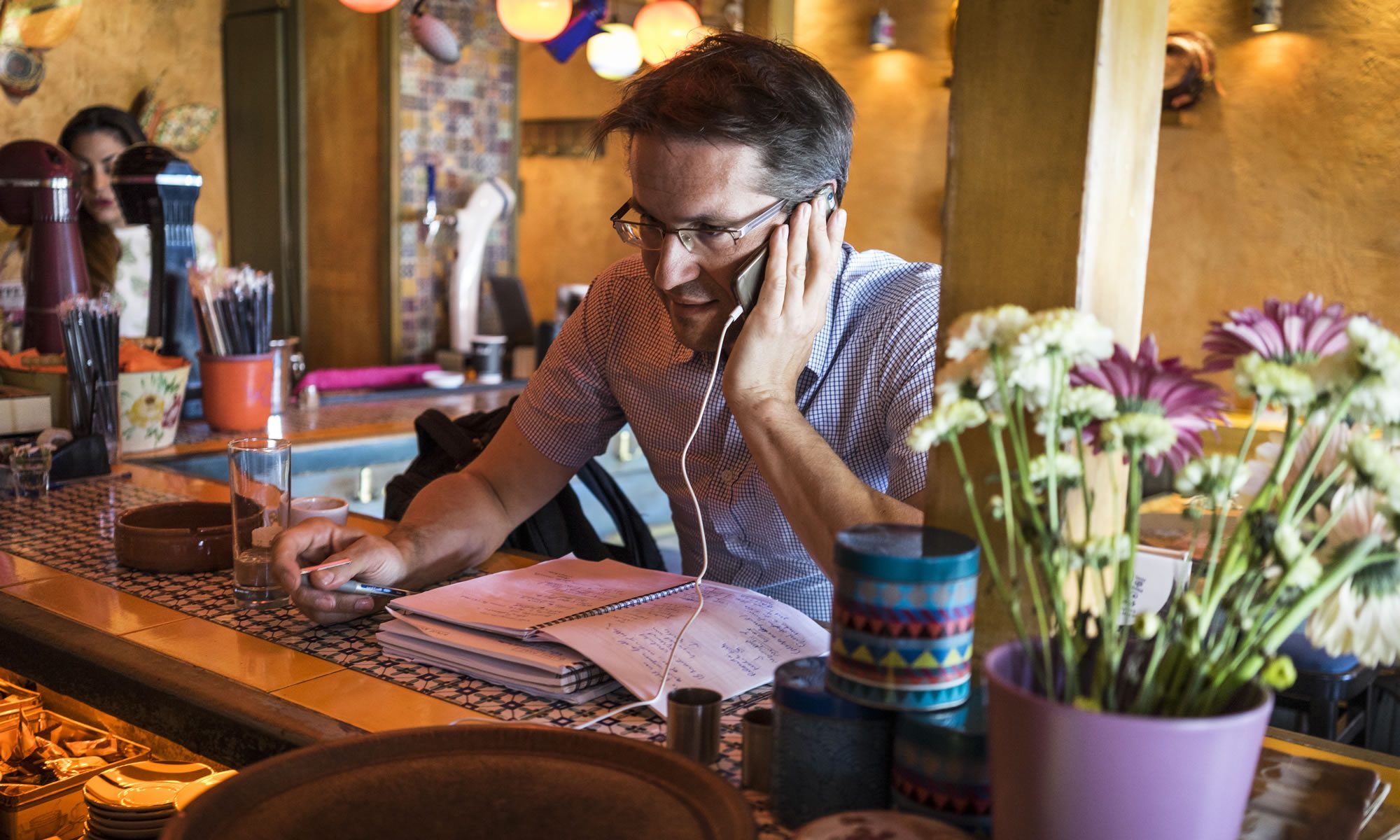
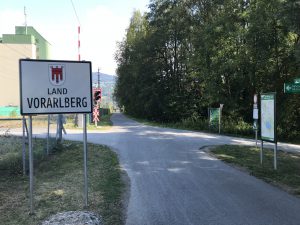

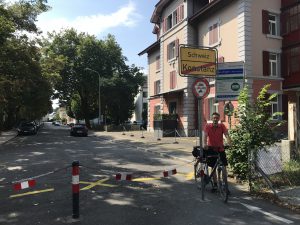

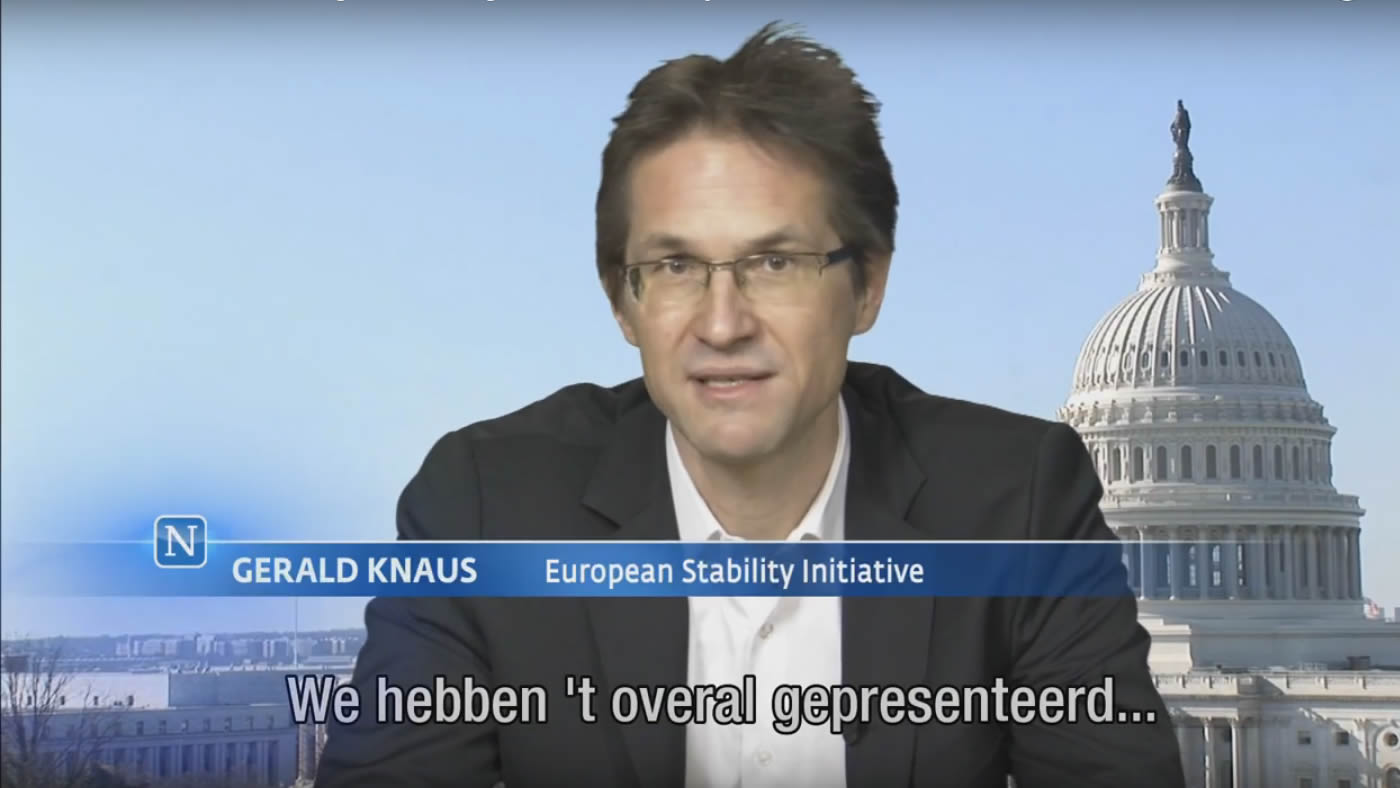 On Dutch news show
On Dutch news show 
